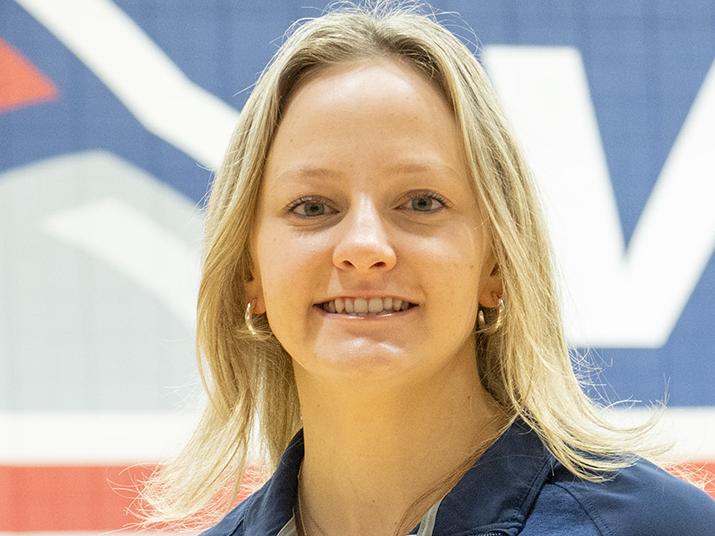Viterbo University biology, biochemistry, and neuroscience students are flush with opportunities to work with professors on research projects in a wide range of topics, from studying new microbial treatments for cancer to organic synthesis (creating new compounds made up of combinations of hydrogen, oxygen, nitrogen and, last but not least, carbon atoms).
Some Viterbo science majors are using their required three-semester research projects to dip into the burgeoning field of wastewater-based epidemiology (WBE), which one day might be widely used for predicting and preventing disease outbreaks and assessing trends in community drug abuse levels.
The La Crosse County Health Department, for example, monitors COVID-19 virus levels detected in wastewater from the La Crosse treatment plant. A study published in the journal Nature late last year indicated this kind of testing could be relied upon to predict surges in case levels, giving hospitals between one and four weeks to prepare for an increase in patient population.
Wastewater-based epidemiology goes back at least to the 1940s, when some communities tested for the virus causing polio. Since the pandemic started it has become more common in this country, but Kyle Backstrand, a Viterbo chemistry professor since 2001, noted that Australia and Europe have started employing WBE two decades ago.
The advantage of WBE in disease and drug detection is it eliminates the need for widespread community testing of individuals and removes the potential for skewed results from dishonesty inherent in drug use surveys.
Backstrand has been partnering with Viterbo student researchers on drug-related WBE projects since 2019. Katie Meyer, who graduated from Viterbo in 2020 with a biology degree, was the first to work with Backstrand on WBE research, looking at the levels of methamphetamine.
Based on the levels of meth metabolites found in wastewater samples coming from 83,000 people served by the La Crosse treatment plant, Meyer’s 2019 analysis estimated there were an average of 15 to 18 daily doses of meth used per 1,000 people. That translates to at least 1,245 doses of meth per day in the area served by the La Crosse plant, a level Backstrand said was about in the middle of the community use range.
Since Meyer’s WBE research, Backstrand also has worked with other students testing for traces of cocaine and heroin, and now Amanda Bogdonovich, a senior biology major from Greenwood is nearing completion of her WBE research that revisits meth levels.
Like all science majors at Viterbo, Bogdonovich began the process by listening to pitches from faculty members about their research and the potential projects the students could undertake related to the faculty studies. Bogdonovich, who plans to go to graduate school for physical therapy, chose to work with Backstrand and with his help she designed a research project that she then presented to a faculty panel for review at the end of spring semester last year.
Bogdonovich’s research was much like Meyer’s, but with a twist. She wanted to see how much of the meth metabolites were removed in the water treatment process, so she got raw wastewater samples (influent) as well as samples of the treated water discharged into the Mississippi River (effluent).
During fall semester, Bogdonovich acquired wastewater samples, then filtered and concentrated them in Viterbo’s laboratory. For the final analysis, a mass spectrometer more advanced than the one at Viterbo was needed to detect the meth metabolites, so Backstrand took the samples Bogdonovich prepared to Gustavus Adolphus College in St. Peter, Minn. Thanks to connections he has there, he has had access to that college’s advanced “instrument.”
This semester, Bogdonovich is doing the final statistical analysis for her research, which she will present at Viterbo’s annual Scholars Day event on April 26. So far, her analytical work indicates that 83 percent of the meth metabolites are removed in the wastewater treatment process.
She also found a major drop in average daily doses. Her analysis found evidence of an average of 7 meth doses per day per 1,000 people, a drop of more than 50 percent from 2019. “That’s only two data points but it could be evidence of a decrease in meth use,” she said.
As Bogdonovich nears completion of her research, two more Viterbo students are starting the second semester of their projects, both of them looking at concentrations of drug metabolites.
Skyla Geller, a junior biology major from Illinois considering graduate school to study environmental sustainability, is looking at traces of THC, while Isabel Torcivia, a junior biochemistry major from Port Washington who plans to become a pharmacist, is testing for fentanyl. Backstand said they are the first Viterbo students to do WBE research on these drugs, so their work will determine whether there are measurable concentrations.
They also are getting weekday and weekend samples to compare the levels, hypothesizing that the weekend samples will show higher drug use.
Many Viterbo students have gone into careers as researchers after working with professors on their projects. But even if they don’t do heavy duty research projects in their day-to-day work, knowing how scientific research is supposed to be done will at least help them better evaluate the validity of study results they encounter, and they’re findings can be valuable in advancing faculty members’ scholarly work.





